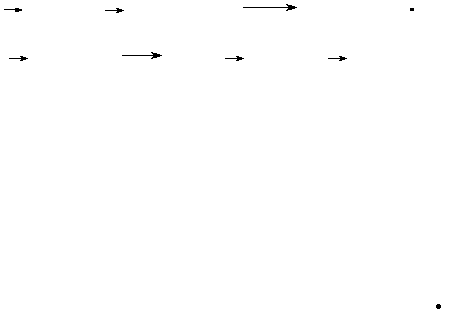
B-1
EXPERIMENT B: CHEMICAL REACTIONS OF COPPER
OBJECTIVES
In this experiment you will carry out a series of chemical reactions, starting with the copper(II) sulfate
prepared in Experiment A.
THEORETICAL CONSIDERATIONS
As mentioned in Experiment A, only the more stable Cu
2+
ion will be studied here. You will synthesize a
series of compounds from copper(II) sulfate. Characteristics of these compounds such as color, solubility,
and crystal form vary considerably. You will observe the differences among the compounds you
synthesize. As the cation is the same (Cu
2+
) in each case, any differences can be attributed to the effect
of the anion(s) or ligands bound to the Cu
2+
ion. The two reaction schemes for this experiment are as
follows:
Scheme A: CuSO
4 (aq)
Cu(OH)
2 (s)
[Cu(NH3)
4
]
2+
(aq)
Ethanol
[Cu(NH3)
4
]SO
4
H2O
(s)
Scheme B: CuSO
4 (aq)
Cu(OH)
2 (s)
Heat
? CuO
(s)
CuSO
4 (aq)
Cu
(s)
Note that in Scheme B, copper metal is recovered as the final product through an oxidation-reduction
reaction with zinc metal. This is the same form of copper that you started with in Experiment A, so you
will have taken copper through a series of compounds ending with the recovery of the copper metal. You
will determine how much of the original copper metal you recovered at the end of the reaction sequence.
EXPERIMENTAL METHOD
In this experiment you will make a number of simple copper compounds starting with copper(II) sulfate.
The two reaction schemes are given above. By following Scheme A, ([Cu(NH3)
4
]SO
4
H2O
(s)
),
tetraamminecopper(II) sulfate monohydrate is the final product. The initial step in preparing this
compound is the addition of ammonia (NH3) to the copper(II) sulfate solution.
